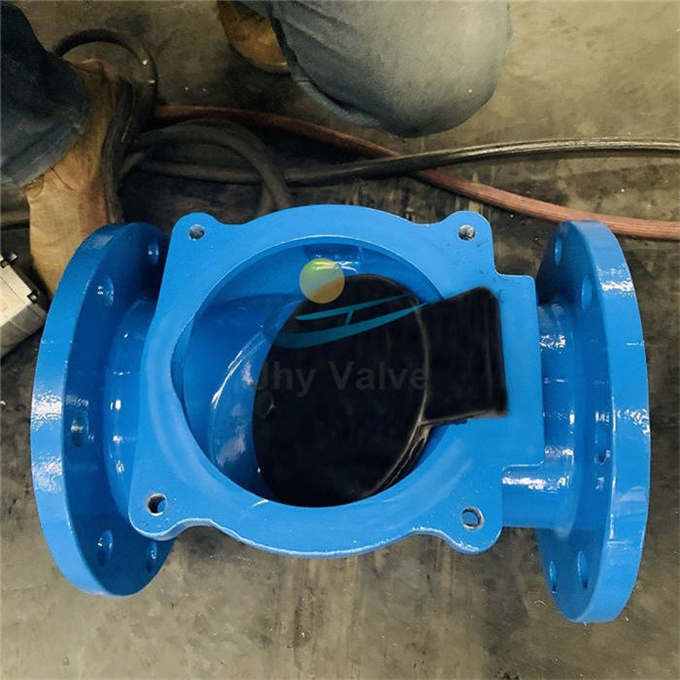What is a check valve used for?
A check valve is typically installed in a pipeline to prevent backflow. A check valve is basically a one-way valve in which fluid can flow freely in one direction, but if the flow is diverted the valve will close to protect the pipeline, other valves, pumps etc. Water hammer can occur if the flow is diverted and no check valve is fitted. Water hammer often occurs with great force and can easily damage pipework or components.

Types of check valves
There are several types of check valves available for water and waste water applications. They work in different ways but serve the same purpose. AVK offers a wide range of swing check valves, ball check valves, tilting disc check valves, tilt seat check valves, nozzle check valves and silent check valves. The most common types of water and waste water check valves are swing check valves and ball check valves.
Swing check valves: Swing check valves are fitted with a disc that swings on a hinge or shaft. The flap swings from the seat to allow positive flow and when flow stops, the flap swings back to the seat to stop reverse flow. The weight of the valve flap and return flow has an effect on the closing characteristics of the valve.
Ball Check valve: The ball check valve functions by means of a ball that moves up and down inside the valve. The seat is machined to fit the ball and the chamber is conical to guide the ball into the seat to seal and stop reverse flow.
Recommended article:Carbon Fiber Telescopic Pole: The Ultimate Lightweight and Sturdy Solution
Comparing different types of door knobsets: Tubular vs. cylindrical
Benefits of Using a High Pressure Washer Nozzle
The Most Precise Metal Casting: Achieving Unparalleled Accuracy in Manufacturing
CNC Milling Services: Precision Manufacturing for Your Unique Needs
The Essential Guide to Roller Bearing Applications: Maximizing Efficiency and Performance
Shandong NiuShang Auto Parts Co., Ltd participated in the Iran (Tehran) International Auto Parts Exhibition
What is a check valve used for?
Check valves are used in many different applications. For example, they are often placed on the outlet side of a pump to protect the pump from backflow. Centrifugal pumps are the most common type of pump and are not self-priming, so non-return valves are essential to keep water in the pipes. In addition, non-return valves are often used in HVAC systems (heating, ventilation and air conditioning systems). They are used, for example, in large buildings where coolant is pumped to many floors. Here a non-return valve is installed to ensure that the coolant does not flow backwards.
Considerations when selecting the Check valve
When selecting a Check valve, it is important to carry out a cost-benefit analysis of the particular system. Often the focus is on reducing costs and obtaining the lowest possible pressure loss at the same time, but with check valves, greater safety equals higher pressure loss. Therefore, to ensure that the check valve protects the system correctly, each system must be evaluated individually and factors such as the risk of water hammer, acceptable pressure loss and the financial consequences of installing a check valve with too much safety must be taken into account to prevent the margin of water hammer. Please contact us for further details.
Hexagon Metal Mesh: Applications and Benefits
How do I Choose a Steel Wire Rope?
Things You Must Know about Steel Wire Rope!
Enhancing Your Home with Stunning Door Window Pull Handles
Understanding the Purpose of Weld Neck Flanges
What’s a Throwout Bearing? We Tell You Here!
Unlocking the Secrets of a Robust Post-Tensioning System
Related Articles
-
Which industries benefit the most from CNC milling for precision engineering?
-
Discover How Post Tension Wedges Enhance Slab on Ground Construction
-
Revolutionizing Automotive Industry with Rapid Prototyping Technology
-
Are post-tension anchors the key to sustainable urban development?
-
What Are the Key Questions to Ask When Ordering High-Quality Trapezoid Diamond Pads?









Comments
0